French Camino Itinerary: 5 Days by Private Car
French Camino, El Camino Frances, or the ‘French Way’ is the most popular of the three routes (along with Spanish and Portuguese) of the Way of St. James, a pilgrimage ending in Santiago de Compostela, where the saint is said to be buried. The pilgrimage’s earliest record dates from the 9th century, and it became popular across Europe in the 11th and 12th century. Today, it’s the most important Catholic pilgrimage route after the pilgrimage to Jerusalem.The Middle Ages weren’t exactly safe, so pilgrims were tended to by a large number of hospitals, pensions and royal protectors. This historic service network coupled with the significant landmarks along the way put the Ways of St. James on the UNESCO World Heritage List.While the pilgrimage is meant to be walked (or biked), you don’t need to subject yourself to aching feet to experience the history of the Camino de Compostela! Laypeople (and faithful) more interested in culture and history can instead just follow the Way of Saint James by car. Every church, town, and city along the way has a character and significant story of its own. And we’ve also lined up some interesting places to visit not directly connected to the pilgrimage.Plus, you can easily still get some of the pilgrim experience by staying in official pensions in each city. These pensions are usually run by the local parish, but could also be operated by pilgrims associations and private companies. Really the only downside of taking a car is if you are devout and looking to walk for penance, or want a compostela ( a certificate that proves completion of the pilgrimage).
Camino de Santiago Route - French Way Itinerary
Day 1:Bordeaux to Saint Jean Pied de Port (stops in: Chateau de la Brede, Rocher de la Vierge)
Day 2:Saint Jean Pied de Port to Pamplona (stops in: Elizondo, Sanctuary of San Miguel)
Day 3:Pamplona to Burgos (stops in: Logrono, Santo Domingo de la Calzada)
Day 4:Burgos to Leon (stops in: San Martin de Tours, Monastery of Sant Anton Ruins)
Day 5:Leon to Santiago de Compostela (stops in: Ponferada, Astorga)
When is the best time to do the Camino de Compostela?
Camino de Compostela is considered one of the most popular tourist routes in the age-old religious tourism sector. Roughly 60% of pilgrims travel to Santiago de Compostela through the Camino Frances. It takes about a month to walk the way, but for people with families or large groups with varying time and physical ability, this shortens significantly when taken by bicycle or private transportation alternatives.The best time to take the Camino de Compostela is generally the Spring of Fall. Summers are hot and can be especially busy (this is peak tourism season). For a truly special, once-in-a-lifetime (or at least only-a-few-times-a-lifetime) experience, plean for a Holy Compostela Year, which is the year in which the 25th of July falls on a Sunday. In this case, the next Holy Year is in 2021, 11 years after the last Holy Compostela Year of 2010. It is projected that there will be up to 600,000 people who will make the trip during the course of 2021, so plan accordingly!
Day 1: Bordeaux to Saint Jean Pied de Port
After taking in Bordeaux’s fine wine and even finer architecture, set a course to Saint Jean Pied de Port at the edge of the French Atlantic Coast.
Chateau de la Brede
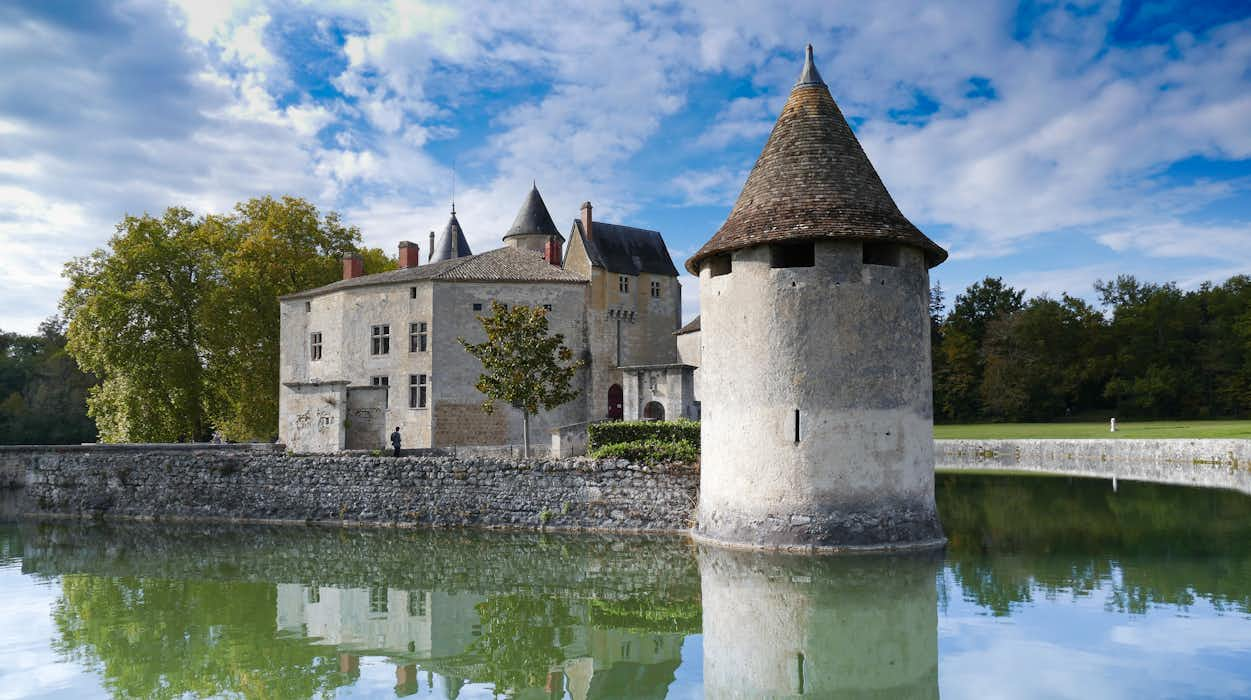
Take an hour to explore the sprawling estate where Montesquieu, the French judge who developed the theory of separation of powers (you know, like the 3 branches of government used in the US Constitution), was born. Overlooking the glorious French countryside, the chateau is a work of surgical precision and a monument to the French contribution to political philosophy and innovation of policy.Chateau de la Brede is open from Easter to November 11.
Rocher de la Vierge

Shaped like the hull of a ship and accented by a statue of the Virgin Mary, you should spend an hour soaking in the stunning views from the top of the Rocher de la Vierge, or Virgin Rock. To reach this coastal lookout Napoleon III built a footbridge that still stands to this day.
Arrival in Saint Jean Pied de Port

One of the last frontiers of the French Atlantic Coast, Saint Jean Pied de Port is a beacon of old French wealth and might. A fishing port and a pirate’s post, the town is best known for the elegant church where Louis XIV married the infant Maria Theresa, ending the Franco-Spanish War.Book a car from Bordeaux to Saint Jean Pied de Port(Total expected time with stops: 5 hrs 8 min)
Day 2: Saint Jean Pied de Port to Pamplona ⇧
After experiencing French history, get ready to cross the border and head from Saint Jean Pied de Port to Pamplona, the beautiful city that hosts the world-famous running of the bulls.
Elizondo
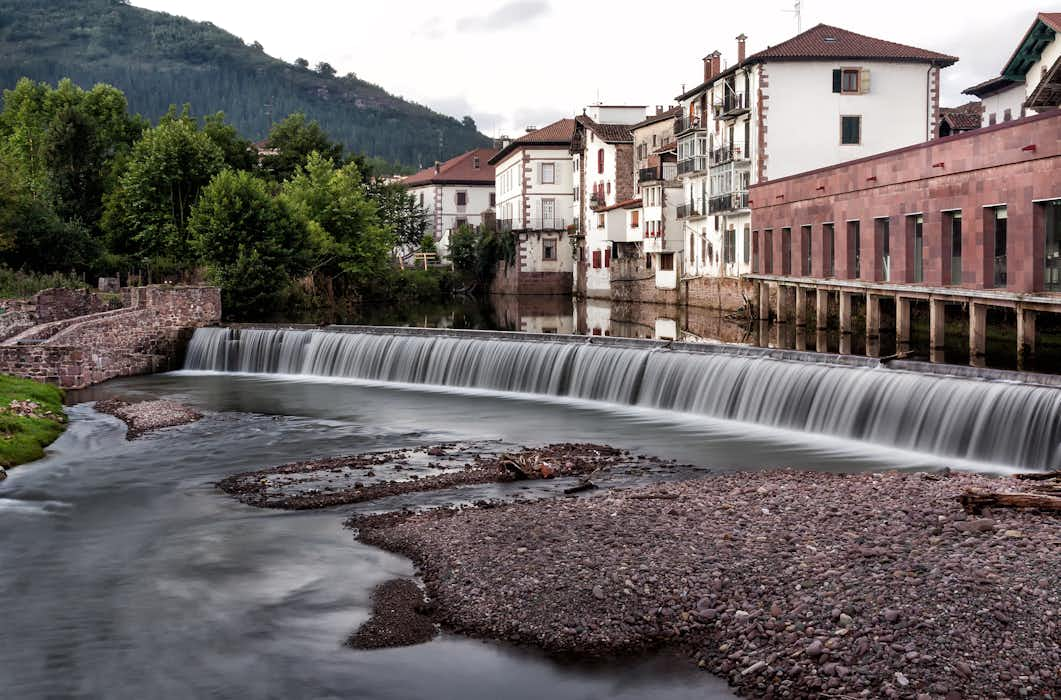
Explore the historic capital of the Batzan Valley for an hour. This bucolic riverside town is filled with some stupendous mansions and palaces thanks to its ties to the Spanish Crown. In the beautiful Baroque city hall you can even find a flag said to have been flown in a 12th century battle!
Sanctuary of San Miguel de Aralar

Visit one of the oldest churches in Navarre for an hour to take in the Romanesque architecture and beautiful natural surroundings. Within the 11th century church you can find an amazing 12th century enameled altarpiece, and the chains Saint Michael was said to have worn when he was sent to the mountaintop for penance.
Arrival in Pamplona

While it might be best known for the running of the bulls, the ancient city of Pamplona has plenty more to offer than the annual bovine stampede. Founded as a Roman camp, it was a medieval cultural hub. In the Plaza Consistorial square, you can find the 13th century cathedral where the medieval kings of Navarre were crowned and buried. While the facade is a Neoclassical remodelling, the original wooden Gothic doors still guard the entrance, and the 13th century cloister is a delight to walk.The main, “Castle Square” is perhaps the city’s most beautiful feature. Lined with trees and 18th century buildings, it’s dominated by the Neoclassical Palace of Navarre. Book a tour in advance to see the Baroque style Throne Room, the Chapel’s altarpiece, and a portrait of King Felipe VII painted by Goya.For a more detailed look at the city’s past, pay a visit to the Museo de Navarra for its astonishing collection of Roman mosaics, Romanesque details from the cathedral, and an amazing array of artefacts from the city’s long history.Book a car from Saint Jean Pied de Port to Pamplona(5 hours and 6 minutes)
Day 3: Pamplona to Burgos ⇧
When you’ve had your fill of architecture and tapas, continue on from Pamplona to Burgos.
Logrono

Though it has ancient roots, it was the Camino de Compostela that gave Logrono importance. It was even mentioned in the very first Camino guide in the 12th century! Take 90 minutes to explore the Rúa Vieja, the historic thoroughfare for the pilgrims on the Camino, to see the Pilgrim's Shelter, famous Pilgrim's fountain, and 16th century church of Santiago. Also don’t miss the Cathedral of Santa María la Redonda for its intricate carvings and artwork. There’s even a painting by Michelangelo above the altar!
Santo Domingo de la Calzada
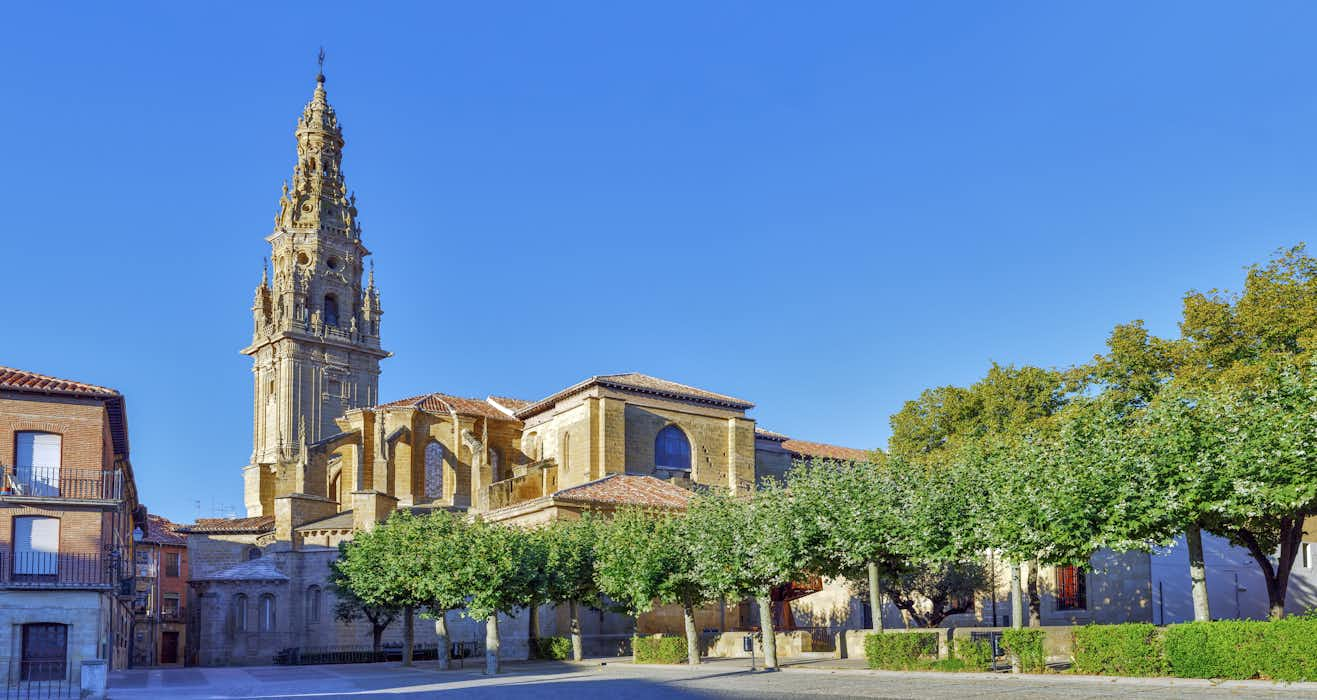
Spend an hour at this riverside city that was essentially made for pilgrims on their way to Santiago de Compostela. In the 12th century, Saint Dominic built a bridge over the River Oja to help pilgrims on their way, founded the famed pilgrim’s hospital and inn, and began construction on the beautiful Gothic cathedral where he’s now interred.
Arrival in Burgos

The historic capital of the Kingdom of Castile, Burgos has Spanish culture in spades. The city skyline is dominated by its UNESCO-listed Gothic cathedral, which encapsulates the entirety of Gothic art in its superb architecture and decor, including paintings, choir stalls, reredos, tombs and stained-glass windows.While the cathedral is by far the largest of Burgos’ monuments, there’s a slew of other medieval sites. The 14th century Cartuja de Miraflores has a jaw-dropping gold altarpiece, and the 11th century Monastery of Las Huelgas on the outskirts of town was where Pedro the Cruel was born. For something completely different, head to the Museum of Human Evolution to see the 800,000-year-old remains of Europe’s earliest hominins in Europe.Burgos is also known as the “capital of the Spanish language” and the "Spanish Gastronomy Capital", so be sure to keep your eyes, ears, and mouth open. While their cheese and black pudding are classic staples, foodies will also be delighted to find more avante-garde offerings as well. It’s been named a Creative City of Gastronomy by UNESCO for its nutritional science work, and in acknowledgement to its proximity to the UNESCO World Heritage site of Atapuerca, some of the finer restaurants serve up whimsical archaeologically inspired dishes.Book a car from Pamplona to Burgos(5 hours and 9 minutes with stops)
Day 4: Burgos to Leon ⇧
Aftering enjoying the sites and flavors of Castile’s medieval capital, the next leg of the Camino de Compostela is to travel from Burgos to Leon
Monastery of San Anton Ruins
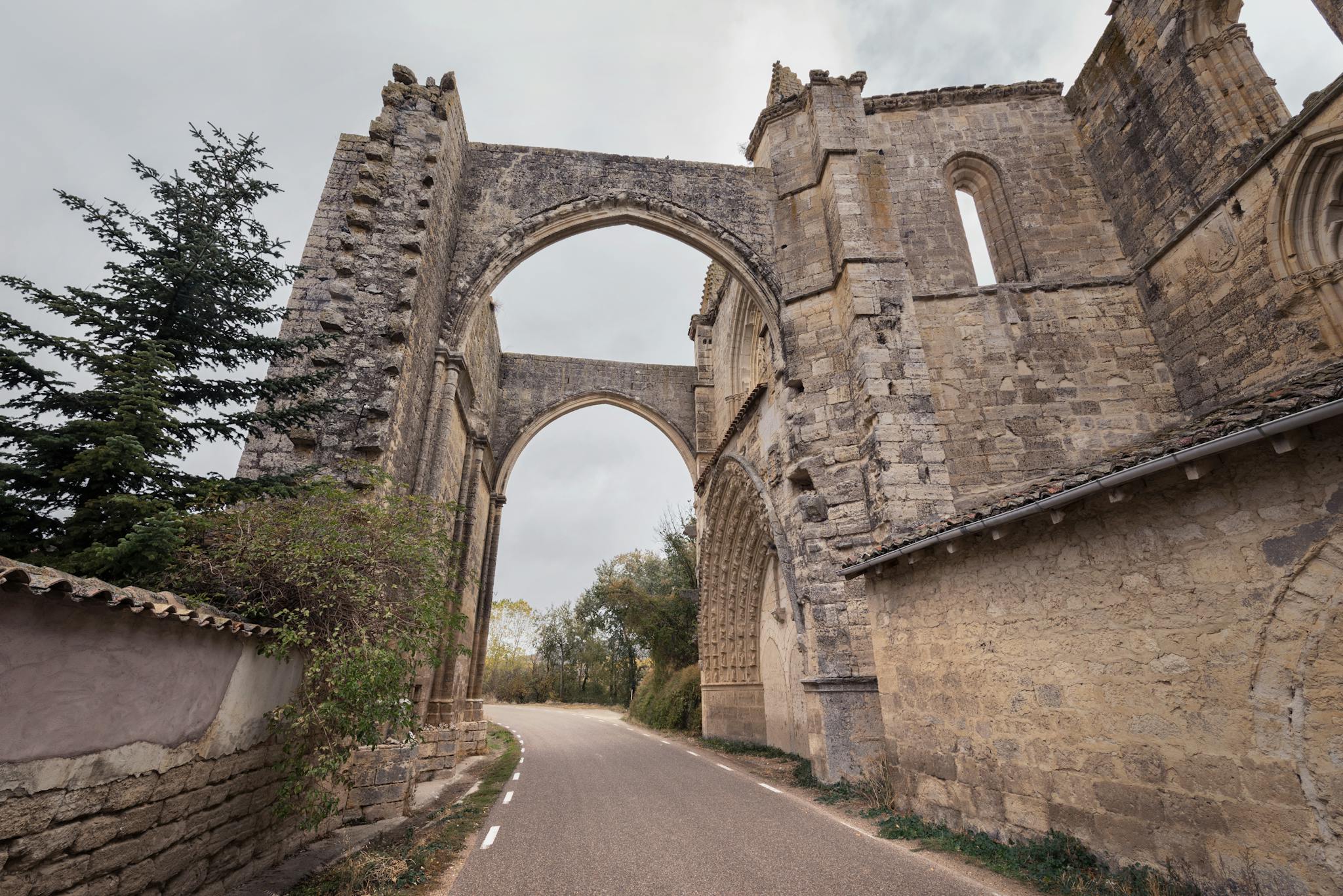
This now-ruined monastery was built by order of King Alfonso VII in the 10th century as a hospital to tend to pilgrims on the Camino de Compostela stricken with St. Anthony’s Fire (a food-born illness caused by eating moldy bread) and other common medieval ailments. While just the arch of the hospital remains, it’s still worth an hour examining the church’s Gothic facade to see the royal crests that adorn it.
San Martin de Tours
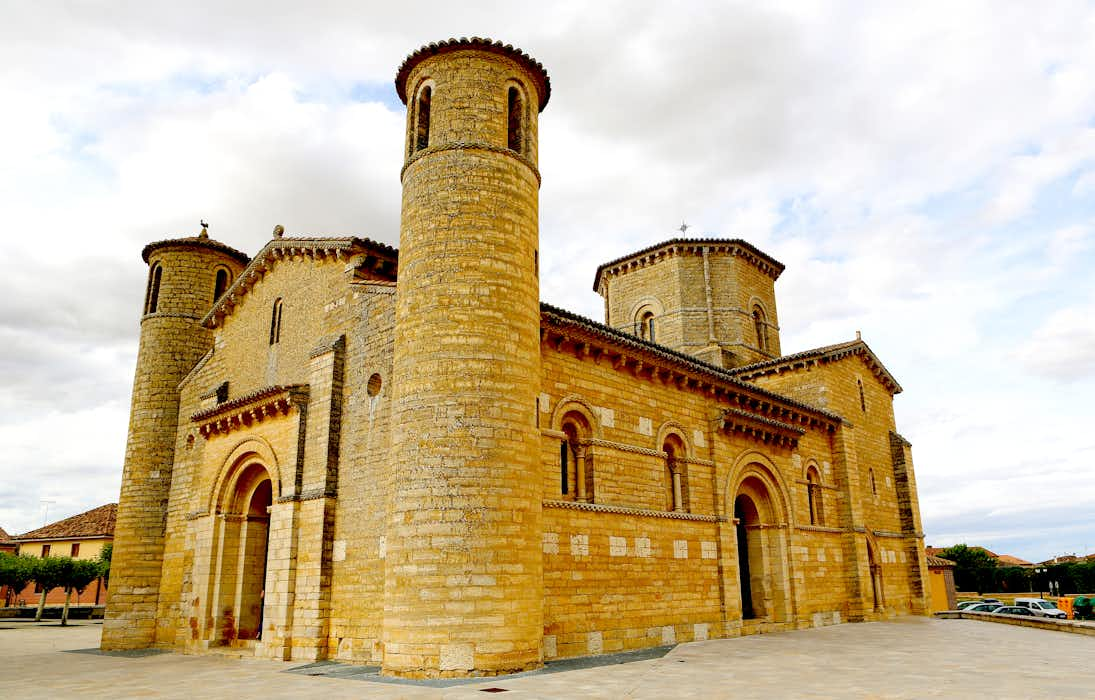
Founded in the 11th century by the Queen of Castille, this elegant church is a prime example of the Romanesque architecture that dots the Way of St. James. You could easily spend 45 minutes admiring the interior’s amazing decorations, especially the intricately carved 13th century christ statue, and detailed column capitals.
Arrival in Leon
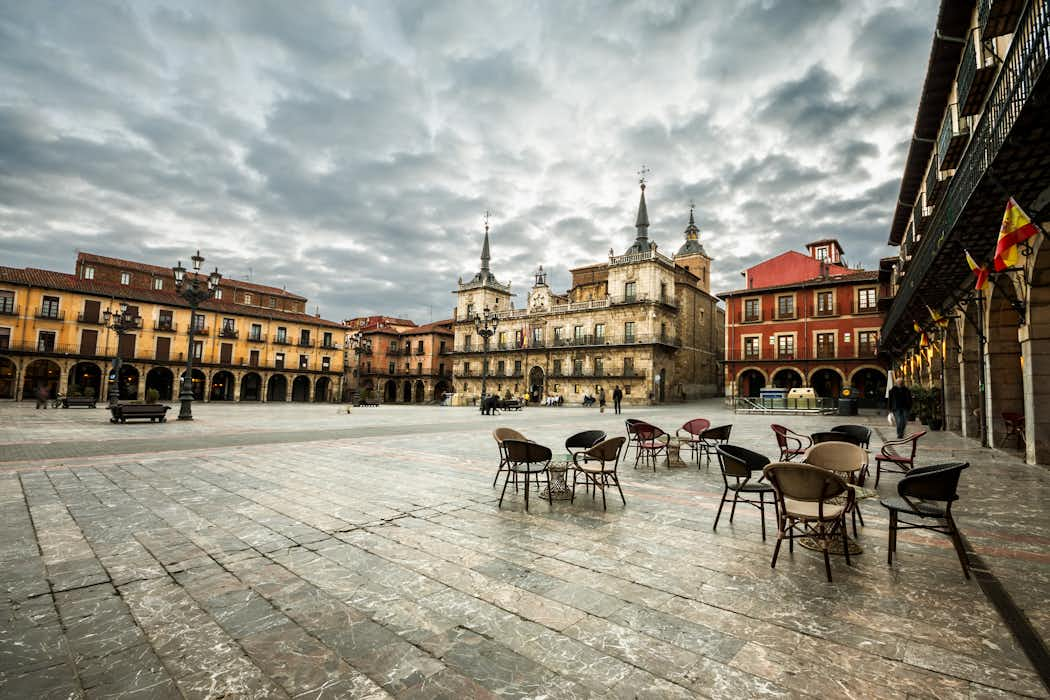
Founded as a Roman military camp, Leon was arguably the most important and civilized city in early Spain. It was the capital of the rebellion against the Moors, had 24 kings before nearby Castile even had laws, was the seat of Spanish Christianity, and home to Europe’s first parliament.With such a rich heritage, you better believe that Leon has the sights to match. The Gothic cathedral is by far the biggest and showiest, with its kaleidoscopic stained glass windows and wealth of artwork, it’s considered one of the three main cathedrals on the Way of Saint James. However, as far as religious architecture and historical significance goes, even the cathedral pales in comparison to the UNESCO-listed Romanesque Basilica of San Isidoro of León. It’s the burial place of Saint Isidore of Seville, and where Europe’s first parliamentary body first convened. The Pantheon of kings, where the medieval kings of Leon are interred, is decorated with amazingly well-preserved 12th century frescoes and columns with Visigothic capitals. Oh, and among the museum’s priceless treasures is what’s said to be the Holy Grail.For a more modern twist, visit the Casa Botines, one of the few examples of Antoni Gaudi’s architecture, or take a gander at Leon’s Museum of Contemporary Art (MUSAC). If you prefer your history more ancient, go to the Museum of Leon, the oldest and biggest historical museum in northern Spain. Their permanent collection exhibits artifacts from as far back as the Bronze Age!Regardless of how you spend your time in Leon, part of it should be devoted to feasting on their famous roast suckling pig and lamb.Book a car from Burgos to Leon(5 hours and 20 minutes with stops)
Day 5: Leon to Santiago de Compostela ⇧
When you’re done pigging out on Leon’s glut of good food and amazing architecture, get ready for the final leg of the Way of St. James: Leon to Santiago de Compostela.
Ponferrada
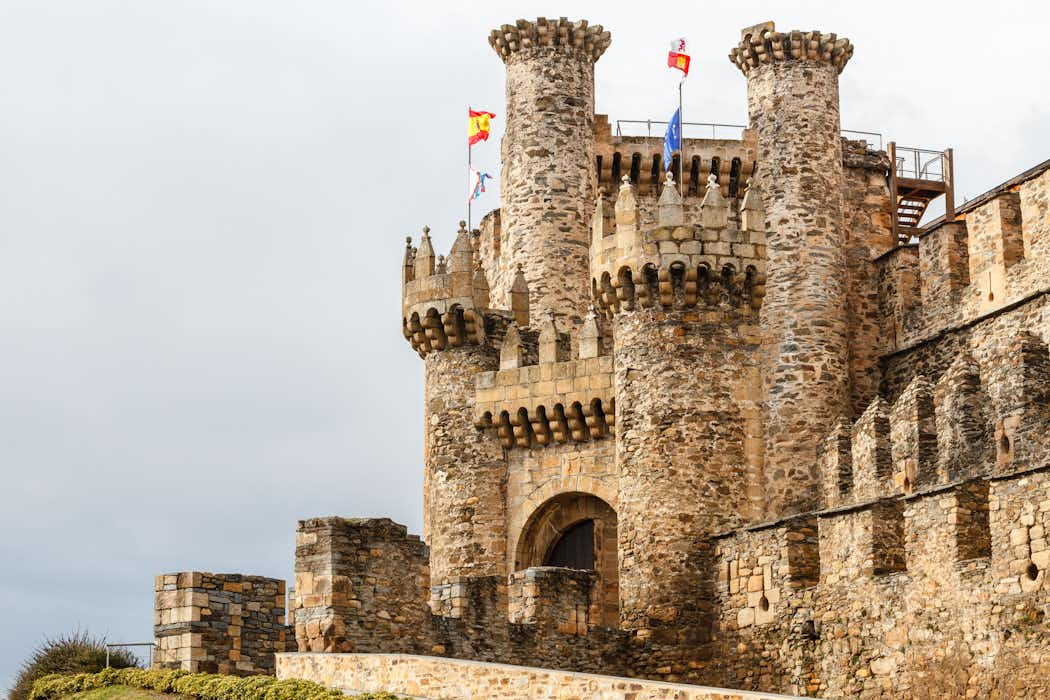
Take an hour to wand this ancient town and explore the medieval castle built by the Knights Templar to protect pilgrims on the Camino de Compostela. Don’t miss the 10th century Church of Santo Tomás de las Ollas on the outskirts of town. The main chapel is a harmonious blend of Christian and Moorish architecture.
Astorga
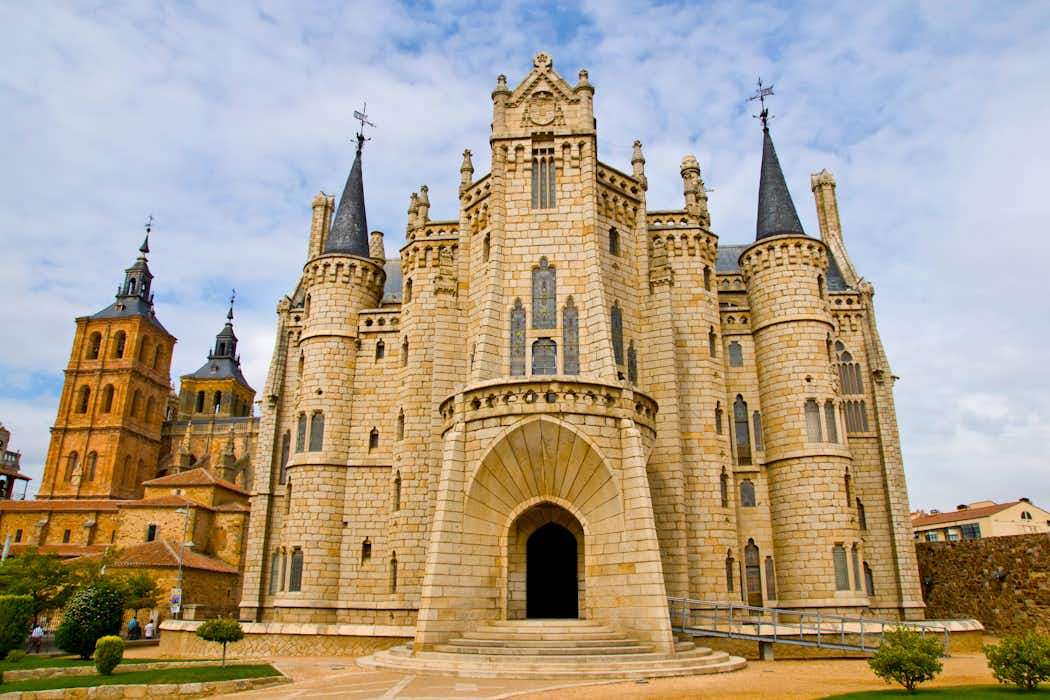
Take an hour to learn more about the history of the Way of St. James in this ancient city. Along with seeing the elegant cathedral don’t miss the Neo Gothic Bishops Palace designed by Antoni Gaudí. Inside, the Pilgrimage Museum exhibits artifacts from the 11th-17th centuries. Astorga was also the birthplace of European chocolate, so be sure you visit the Chocolate Museum if you’re crazy for cacao.
Arrival in Santiago de Compostela

You made it to the end of the Way of St. James! Santiago de Compostela is not only one of the most important pilgrimage destinations in all of Christianity, but one of the most beautiful cities in Spain. Filled with Romanesque, Gothic and Baroque architecture, the entire old town is a UNESCO World Heritage Site that’s a delight to wander.Santiago de Compostela’s most important monument is, of course, its amazing 11th century cathedral. A jewel of Romanesque architecture with intricate Gothic and Baroque additions made to the facade, Obradoiro Square where the western entrance is is widely considered one of the single most beautiful urban areas in the world. Behind the western facade, the amazing 12th-century Portico da Gloria is one of the world’s finest pieces of Romanesque sculpture, though nearly every element of the cathedral is a work of art.Of course, the crypt is what’s been drawing pilgrims for over a millennium. It’s here that you can see the tomb of St. James and two of his disciples, as well as several Spanish kings. Even if you’re not interested in the religious importance, the historic and artistic importance is incontestable.Book a car from Leon to Santiago de Compostela(5 hours and 55 minutes with stops)
Ready to Book your Way of St. James Tour?
Ready to follow one of the most important pilgrimage routes in Christianity and see some of the most historic and culturally significant sights in Western France and Spain? Daytrip is here for you if you want to experience the Camino de Compostela without the pain of walking hundreds of miles. If you ever need help, just contact Daytrip customer service!
Book a car from Bordeaux to Saint Jean Pied de Port
Book a car from Saint Jean Pied de Port to Pamplona
Book a car from Pamplona to Burgos
Book a car from Burgos to Leon
Book a car from Leon to Santiago de Compostela

